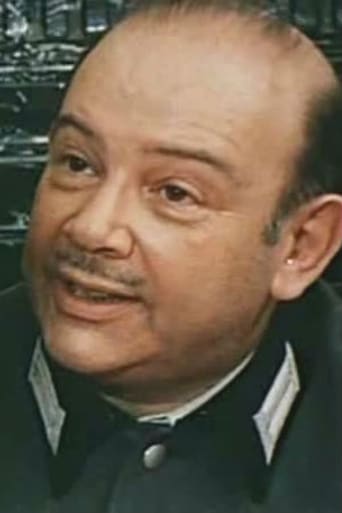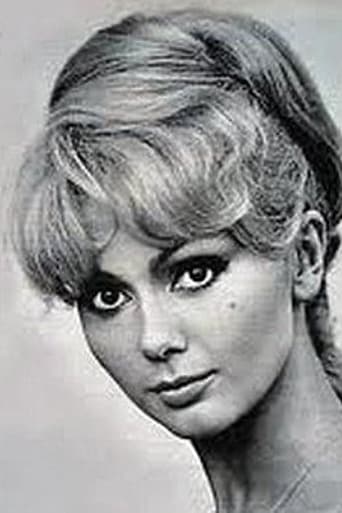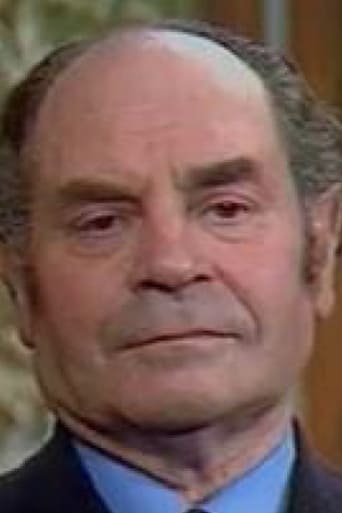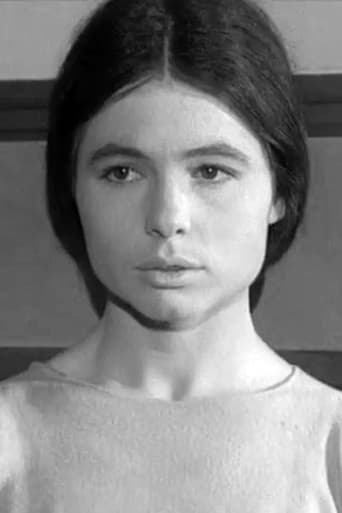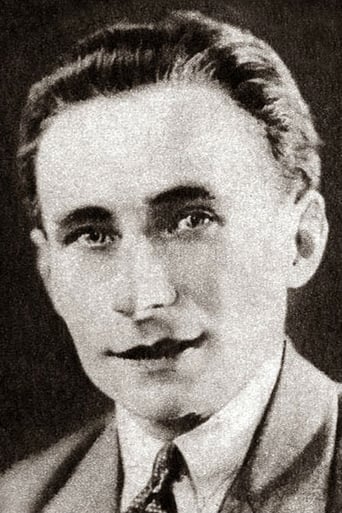Console
best movie i've ever seen.
Curapedi
I cannot think of one single thing that I would change about this film. The acting is incomparable, the directing deft, and the writing poignantly brilliant.
Arianna Moses
Let me be very fair here, this is not the best movie in my opinion. But, this movie is fun, it has purpose and is very enjoyable to watch.
Zandra
The movie turns out to be a little better than the average. Starting from a romantic formula often seen in the cinema, it ends in the most predictable (and somewhat bland) way.
sergicaballeroalsina
Mon oncle is a movie that did not follow any fashion. Monsieur Hulot did not follow any fashion either. An original main character immersed in a deliberate silence, like Buster Keaton and who, like Charlot, does not fit into Modern Times. The film is, in part, a portrait of the ridicule of post- Modern life. A satire of the precious snobs. It unfolds like a great cinematographic trick. A great show of visual jokes, of mime, of old comedy, of rudimentary and timeless universal humor. An essential way of doing comedy through a language that crosses any border, classic but current. Its photography have the feeling of a cartoon and a comic strip. Its music and its colors refer to the circus and the acrobats of daily life, the clowns of the work and the beauty of the imperfect.
Arta Barzanji
Mon Oncle (1958- Jacques Tati) Mon Oncle, much like other Tati films, is about Monsieur Hulot and his struggles with the industrialized and modern society. Tati, with his trademark Hulot character is much like the silent era comedians, not only because he barely talks but also because of his simplicity and innocence. He is dazed and confused by the modern world (in a scene he literally escapes from her sister's place after dropping his nephew) and prefers his own old-fashioned neighborhood. In fact there is even a visual line between the modern world and Hulot's own neighborhood (the old world!) that is the wreckage of a break wall with a couple of tall buildings far back in the background (the break wall representing the old world and buildings the modern world) and every time Hulot wants to go to the modern part of the city (whether to go to his sister's or to go to the factory etc.) he passes through there. Gray, silver and blue are the dominating colors in the modern world (in contrast to the warmer colors of Hulot's neighborhood) and modern architecture , minimalist decors and complicated machines are everywhere whereas on the other side Hulot reflects sunlight on a bird when he wants to listen to music at his apartment! Hulot's brother-in-law owns (or works in) a plastic factory and they constantly tell their friends that plastic has been used in different parts of their home. When Hulot goes to work in the factory he goofs up the first day and makes plastic pipes which look like sausage! Plastic is another representation of the modern world with which Hulot cannot cope. Everything in the modern part of the city is highly stylized. Hulot's sister and her friends and family are very pretentious and they act stylized and unnatural. In a scene during the party when they want to move the chairs to another spot, they precisely follow the designated and paved path and are careful not to step on the space between the blocks. Hulot doesn't communicate much with the people at the party (or elsewhere!). He seems to prefer the childish simplicity of his nephew and we see him spending most of his free time with him. In the end when Hulot (the symbol of the old, conventional world) is leaving his neighborhood, we see that the buildings are being wrecked; the modern world is taking over! Tati's comedy is a rare example of visual comedy in cinema with clever uses of mise-en-scene. Something that is very refreshing to watch for all of us who have been accustomed to the verbal (and mostly vulgar!) comedies of Hollywood. In a scene where Hulot's sister is showing their neighbor to her husband from the window, we get a long shot from them from outside of the building and it's as if their heads are the houses pupils and the windows are its glasses! The same joke recurs when Hulot is sneaking in to their house at night. He makes a noise and suddenly 2 heads with black hair pop up from the window and again look like the houses pupils. To reinforce the idea, they simultaneously and in the same direction, much like human eye does. The visual gags are made possible through Tati's combination of long takes and long shots with fixed camera that lets the spectator choose what he wants to see from the -usually- multiple actions that are happening at the same time in the scene. The scenes like the part in this film or the restaurant in Playtime are perfect examples of Tati's precise choreography combined with a camera work that gives you the freedom to choose want you want to see. Tati's most interesting use of formal elements is probably with sound. "I pitch dialogue at the level of ambient sounds" he said, "like the way you hear them in a supermarket or train station". He defies what Chion called Vococentrism, for him dialogue is just a sound like any other sound. Instead of dialogue he heavily relied on sound effects and made one of the most interesting uses of them in film history.
Anthony Iessi
Chaplin, Keaton, Jerry Lewis, Inspector Clouseau, Mr. Bean…. We know all of these characters, but what of Hulot? The French pantomime from the wonderful imagination of Jacques Tati. Not to say that slapstick comedy hadn't existed or flourished already under the world of Chaplin, but Tati offered a unique, intimate, and really gentle version of it. That is to say, he combines it with the principles of Italian Neorealism. It's Micro-Slapstick, as I would call it. A combination of real life, silly and sublime, is what Tati is striving to look for. No film of his better exemplifies this idea than Tati's first color picture "Mon Oncle". It's a series of long-form skits, filled with very humorous micro-actions and very foolish behavior on behalf of Hulot and the entire set of goof-ball players. The story simply tells of Hulot, down on his luck, crashing at his sister's place in order to find a job in a new city. What follows is comedy of errors. As we know, Hulot can't help himself, and his naïve curiosity leads him into some embarrassing and outrageous situations. But tomfoolery is gracefully done by all of the actors and the director himself. It's a ballet of sorts. Take for instance a scene where Hulot accidentally block the flow of water to the strange fish-shaped fountain in his sister's front lawn, during a lavish dinner party. For about ten minutes or so, we see the event unfold, in a long shot, as we are guided through the step-by-step process of fixing the problem. Hulot tries to stick his foot back onto the hole, which works temporarily, but he can't just keep his foot there! After a while of strange problem solving, Hulot runs off, and leaves the patrons of the dinner party to deal with the problem themselves. What follows is another series of embarrassing problem solving, this time revolving around people who don't have a clue as to how the situation happened in the first place. Every last action is as monotonous, strange and silly as a predicament like this would play out in real life. Tati allows us to appreciate the simple fact of life, that when things go bad, they tend to go worse over time. What about the gentle side of the picture? Can it be just mishaps, or is there truly a heart to the picture? Well there certainly is, and it even begins at the very beginning. The film opens and ends with a group of puppy dogs frolicking around the French city of which the film takes place. As adorable as that is, it's a reassurance that where Tati is taking us is a happy little place. The spirit from the very beginning is just plain fun. All of the jokes and gags that the film offers us definitely exist along the lines of laughing with the performers, not at them. It's just plain fun to embark on some mischief. Take for instance, the scene where the little kids of the town gamble to see how many townspeople knock into a lamppost. It's hilarious, in that classic child prankster way, and definitely as harmless as they come. The parents all blame Hulot for influencing the trouble, but Hulot doesn't care, for he and boys are having way too much fun. It all cultivates near the end of picture, when he gather up the boys in order to dispose of a clump of rubber hoses that he accidentally made at the factory. Hulot and boys throw the big pile off of a bridge, into the water, and scare a teenage couple down below into thinking that a suicide had taken place. The boys and Hulot run off in their wagon, and sing songs all the way home. There's such an innocence to these actions, and reminds us greatly about the simplicity of childhood. Hulot is a little kid at heart, and much to the parents with whom he is living with; the careless fun eventually rubs off them. Through a series of pantomimes, gestures and other events, Tati creates a beautiful world of childhood wonder, and that is what makes the film "Mon Oncle" unlike any slapstick comedy ever since. It's the child at heart that Tati was able to capture in all of us through his titular character Hulot, and through his films, we'd all like to be like those puppy dogs, and scamper about the streets of France, looking for fun at every turn.
sumantra roy
The house in which Mr. Hulot's sister with her husband and son live is probably the central character of the film Mon Oncle. The house is a modern and complicated one, you get everything at the push of a button and yet it is very difficult to live. It is a puzzle not only for out of place Mr. Hulot but also for his sister and her husband, the owners of the house. They don't get to hear each other because of the sound of machine, and they learn to cope with it. There are number of things that can go wrong at any time, the decorated trees, the fountain, the kitchen, the garage, the car, the garden, the gate – anything, yet these are impossible to live without.Mr. Hulot himself is the most amusing among all of them. Throughout the film he doesn't utter a single word though seems to say a lot of things with his gestures. He looks very odd in his behavior, and always a misfit, be it in the house or in the workplace. But he is a completely unflappable person, nothing really matters to him. He is devoid of any human emotion. In fact, in some ways all the characters in the film are like dolls, it seems that nothing of this world can touch, move, alter or affect them.The film doesn't have a coherent story to tell, it's about bits and pieces put up together, mostly underlining its central theme of little everyday absurdities rising out of the meeting of contradictions. There are number of characters here and there, the street dogs, the kids, the factory, the school, the sweeper, the shopkeeper and so on and so forth with a little touch of mischief and amusement revolving around all of them.Mon Oncle has striking similarities with Modern Times and Jacques Tati with Charles Chaplin. The first similarity is off course the subject of the film. Second, Mon Oncle should be considered more or less a silent film that has music throughout like Chaplin films (though it has some dialog in it, but one feels nothing would have hampered without it). Third, in simple treatment of camera, and last but not the least, like Chaplin, Tati is also star/director/co-writer and producer of his project. There is probably one difference though. There are numerous scenes in a film like Modern Times that would make us burst out in laughter, but in Mon Oncle it is not so. There is not a moment which makes you burst out in laughter. What it does is something different, it holds you throughout, it amuses you and while watching you always find yourself with a quiet grin on your face. I have seen only two films of Tati (Playtime and Mon Oncle) and it seems to me that both of them could be a bit shorter in length. Probably that's the only negative criticism I have against him.There are number of reasons for which one must see Mon Oncle. It has got amazing sets, stunning lighting, and admirable use of color. It has jovial use of sound and music and brilliant cinematography. Mon Oncle is one timeless classic that can be seen time and time again.


